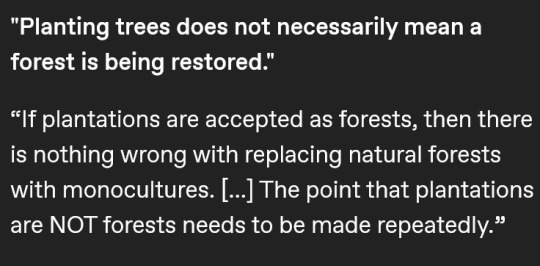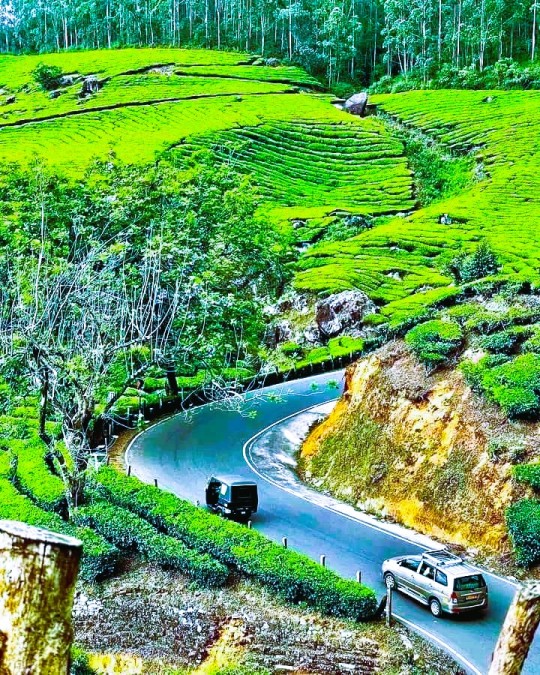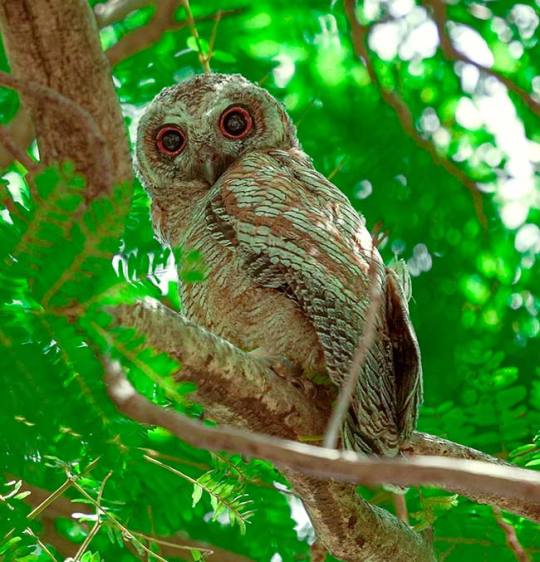#western ghat mountains
Photo

Aditi the leopard has a large enclosed forest home at the Manikdoh Leopard Rescue Centre in the Western Ghat mountains of Maharashtra. The area is one of the world’s eight hotspots for biodiversity.
Photo by Akash Subhash Dolas
#akash subhash dolas#photographer#wildlife sos#leopard#manikdoh leopard rescue centre#western ghat mountains#animal#mammal#wildlife#cat#maharashtra#nature
65 notes
·
View notes
Text
Morning vibes are real
#rasamanoj

#lensblr#mj#mjphotography#mjphotos#mjtag#original photographers#photographers on tumblr#photography#rasamanoj#street photography#landscape photography#urban landscape#mountains#western ghats#photogram
5 notes
·
View notes
Text
#youtube#nature#travel#travel photography#photography#traveling#trip#tourism#camping#vacation#tiger#elephant#western ghats#ghats#night#mountain bike#forest#tamil vlog#travel vlog#vlogger
0 notes
Text
youtube
#trekking#trekdaily#western ghats#peru#holy mountain#mountains#mountain#coimbatore#holy spirit#holy#temples#temple#spiritual awareness#spiritualism#spiritual guide#spiritual#spirituality#spiritual development#spiritual awakening#divine#social media#youtube#travel#vacation#nature#landscape#wonderful places#tamilnadu#hills#hilltop
0 notes
Photo


This is the highest peak in peninsular India. Situated at an elevation of 2,695, this peak is known famously as the Everest of Southern India. It is very close from the famous hill station Munnar which is also situated in western ghats in Kerala and famous for its tea plantations.
0 notes
Text

today's elegant frog of the day is the purple frog (Nasikabatrachus sahyadrensis)!!!!!!!!!!!!!!!!!!!!!! they're endemic to the western ghats mountain range and spend most of their lives underground! they are also, notably, rather purple.
photo by sivabirds!
1K notes
·
View notes
Text
Wild to think that Toronto and North Bengal have the similar temperatures today meanwhile it is beach weather in South Bengal
#thoughts#West Bengal is such a long state…..#both mountains and the sea but also winter and summer#I guess that is true for eastern and western ghats too but this isn’t simply an altitude effect#it’s insane to me#imagine if we had undivided Bengal think of weather fluctuations for a second
0 notes
Text

Despite its green image, Ireland has surprisingly little forest. [...] [M]ore than 80% of the island of Ireland was [once] covered in trees. [...] [O]f that 11% of the Republic of Ireland that is [now] forested, the vast majority (9% of the country) is planted with [non-native] spruces like the Sitka spruce [in commercial plantations], a fast growing conifer originally from Alaska which can be harvested after just 15 years. Just 2% of Ireland is covered with native broadleaf trees.
Text by: Martha O’Hagan Luff. “Ireland has lost almost all of its native forests - here’s how to bring them back.” The Conversation. 24 February 2023. [Emphasis added.]
---
[I]ndustrial [...] oil palm plantations [...] have proliferated in tropical regions in many parts of the world, often built at the expense of mangrove and humid forest lands, with the aim to transform them from 'worthless swamp' to agro-industrial complexes [...]. Another clear case [...] comes from the southernmost area in the Colombian Pacific [...]. Here, since the early 1980s, the forest has been destroyed and communities displaced to give way to oil palm plantations. Inexistent in the 1970s, by the mid-1990s they had expanded to over 30,000 hectares. The monotony of the plantation - row after row of palm as far as you can see, a green desert of sorts - replaced the diverse, heterogenous and entangled world of forest and communities.
Text by: Arturo Escobar. "Thinking-Feeling with the Earth: Territorial Struggles and the Ontological Dimension of the Epistemologies of the South." Revista de Antropologia Iberoamericana Volume 11 Issue 1. 2016. [Emphasis added.]
---
But efforts to increase global tree cover to limit climate change have skewed towards erecting plantations of fast-growing trees [...] [because] planting trees can demonstrate results a lot quicker than natural forest restoration. [...] [But] ill-advised tree planting can unleash invasive species [...]. [In India] [t]o maximize how much timber these forests yielded, British foresters planted pines from Europe and North America in extensive plantations in the Himalayan region [...] and introduced acacia trees from Australia [...]. One of these species, wattle (Acacia mearnsii) [...] was planted in [...] the Western Ghats. This area is what scientists all a biodiversity hotspot – a globally rare ecosystem replete with species. Wattle has since become invasive and taken over much of the region’s mountainous grasslands. Similarly, pine has spread over much of the Himalayas and displaced native oak trees while teak has replaced sal, a native hardwood, in central India. Both oak and sal are valued for [...] fertiliser, medicine and oil. Their loss [...] impoverished many [local and Indigenous people]. [...]
India’s national forest policy [...] aims for trees on 33% of the country’s area. Schemes under this policy include plantations consisting of a single species such as eucalyptus or bamboo which grow fast and can increase tree cover quickly, demonstrating success according to this dubious measure. Sometimes these trees are planted in grasslands and other ecosystems where tree cover is naturally low. [...] The success of forest restoration efforts cannot be measured by tree cover alone. The Indian government’s definition of “forest” still encompasses plantations of a single tree species, orchards and even bamboo, which actually belongs to the grass family. This means that biennial forest surveys cannot quantify how much natural forest has been restored, or convey the consequences of displacing native trees with competitive plantation species or identify if these exotic trees have invaded natural grasslands which have then been falsely recorded as restored forests. [...] Planting trees does not necessarily mean a forest is being restored. And reviving ecosystems in which trees are scarce is important too.
Text by: Dhanapal Govindarajulu. "India was a tree planting laboratory for 200 years - here are the results." The Conversation. 10 August 2023. [Emphasis added.]
---
Nations and companies are competing to appropriate the last piece of available “untapped” forest that can provide the most amount of “environmental services.” [...] When British Empire forestry was first established as a disciplinary practice in India, [...] it proscribed private interests and initiated a new system of forest management based on a logic of utilitarian [extraction] [...]. Rather than the actual survival of plants or animals, the goal of this forestry was focused on preventing the exhaustion of resource extraction. [...]
Text by: Daniel Fernandez and Alon Schwabe. "The Offsetted." e-flux Architecture (Positions). November 2013. [Emphasis added.]
---
At first glance, the statistics tell a hopeful story: Chile’s forests are expanding. […] On the ground, however, a different scene plays out: monocultures have replaced diverse natural forests [...]. At the crux of these [...] narratives is the definition of a single word: “forest.” [...] Pinochet’s wave of [...] [laws] included Forest Ordinance 701, passed in 1974, which subsidized the expansion of tree plantations [...] and gave the National Forestry Corporation control of Mapuche lands. This law set in motion an enormous expansion in fiber-farms, which are vast expanses of monoculture plantations Pinus radiata and Eucalyptus species grown for paper manufacturing and timber. [T]hese new plantations replaced native forests […]. According to a recent study in Landscape and Urban Planning, timber plantations expanded by a factor of ten from 1975 to 2007, and now occupy 43 percent of the South-central Chilean landscape. [...] While the confusion surrounding the definition of “forest” may appear to be an issue of semantics, Dr. Francis Putz [...] warns otherwise in a recent review published in Biotropica. […] Monoculture plantations are optimized for a single product, whereas native forests offer [...] water regulation, hosting biodiversity, and building soil fertility. [...][A]ccording to Putz, the distinction between plantations and native forests needs to be made clear. “[...] [A]nd the point that plantations are NOT forests needs to be made repeatedly [...]."
Text by: Julian Moll-Rocek. “When forests aren’t really forests: the high cost of Chile’s tree plantations.” Mongabay. 18 August 2014. [Emphasis added.]
#abolition#ecology#imperial#colonial#landscape#haunted#indigenous#multispecies#interspecies#temporality#carceral geography#plantations#ecologies#tidalectics#intimacies of four continents#archipelagic thinking#caribbean
2K notes
·
View notes
Text

Munnar, Idukki district, Kerala, India: Munnar is a town and hill station located in the Idukki district of the southwestern Indian state of Kerala. Munnar is situated at around 1,600 metres (5,200 ft) above mean sea level, in the Western Ghats mountain range. Munnar is also called the "Kashmir of South India" and is a popular honeymoon destination. Wikipedia
63 notes
·
View notes
Text

Munnar, Idukki, Kerala, India: Munnar is a town in the Western Ghats mountain range in India’s Kerala state. A hill station and former resort for the British Raj elite, it's surrounded by rolling hills dotted with tea plantations established in the late 19th century. Eravikulam National Park, a habitat for the endangered mountain goat Nilgiri tahr, is home to the Lakkam Waterfalls, hiking trails, and the 2,695m-tall Anamudi Peak.
33 notes
·
View notes
Photo

The Mottled wood owl is unique to India and can be recognized by its brilliant red eyes and haunting calls. This beauty was spotted near our leopard centre in the biodiverse Western Ghat mountains of Maharashtra.
Photo by Lenu Kannan.
#lenu kannan#photographer#wildlife sos#mottled wood owl#owl#bird photography#india#nature#western ghat mountains#maharashtra
44 notes
·
View notes
Text
Guide to Popular Travel Destinations Accessible by Bus with BusAdda in India
Travelling by bus is a convenient and economical way to explore the diverse and culturally rich destinations across India. With BusAdda, an online platform for booking bus tickets, you can easily plan your next adventure to some of the country's most sought-after destinations. Here's a detailed guide to a few of these popular travel spots, highlighting the attractions, activities, and transportation options available, while emphasising the ease of booking bus tickets online.
1. Goa: Sun, Sand, and Serenity
Attractions: Explore the golden beaches of Goa, including Calangute, Baga, and Anjuna. Visit historic landmarks like Aguada Fort and Basilica of Bom Jesus. Experience the vibrant nightlife at clubs and beach shacks.
Activities: Indulge in water sports such as parasailing, jet skiing, and banana boating. Take a cruise along the Mandovi River or venture into the lush greenery of Dudhsagar Waterfalls.
Transportation: BusAdda offers a range of bus services to Goa from major cities like Mumbai, Pune, and Bangalore. With flexible timings and comfortable seating options, booking your bus tickets online is hassle-free, allowing you to focus on enjoying your holiday.
2. Manali: Gateway to the Himalayas
Attractions: Marvel at the breathtaking landscapes of Manali, including snow-capped mountains, lush valleys, and pristine rivers. Explore Rohtang Pass, Solang Valley, and Hadimba Temple.
Activities: Engage in adventure activities such as trekking, paragliding, and river rafting. Relax in natural hot springs or go on scenic drives to nearby attractions like Kullu and Kasol.
Transportation: BusAdda provides convenient bus services to Manali from cities like Delhi, Chandigarh, and Shimla. Booking your bus tickets online ensures a smooth journey amidst the stunning vistas of the Himalayas.
3. Jaipur: The Pink City
Attractions: Discover the rich history and culture of Jaipur by visiting iconic landmarks such as Amber Fort, City Palace, and Hawa Mahal. Explore the colourful markets of Johari Bazaar and Bapu Bazaar.
Activities: Experience the royal heritage with elephant rides at Amer Fort, attend cultural performances at Chokhi Dhani, and indulge in traditional Rajasthani cuisine.
Transportation: BusAdda offers reliable bus services to Jaipur from cities like Delhi, Agra, and Ahmedabad. Booking your bus tickets online allows you to explore the vibrant streets of Jaipur with ease and convenience.
4. Munnar: Paradise in the Western Ghats
Attractions: Immerse yourself in the lush tea plantations, misty mountains, and cascading waterfalls of Munnar. Visit attractions like Mattupetty Dam, Eravikulam National Park, and Tea Museum.
Activities: Go trekking to Echo Point or Top Station for panoramic views. Enjoy boating in Kundala Lake or explore the local flora and fauna at Blossom International Park.
Transportation: BusAdda facilitates seamless bus travel to Munnar from cities like Kochi, Coimbatore, and Bangalore. By booking your bus tickets online, you can embark on a scenic journey through the Western Ghats without any hassle.
Whether you're seeking sun-soaked beaches, snow-clad mountains, royal heritage, or verdant landscapes, BusAdda offers convenient bus services to help you reach your desired destination in India. With easy online booking options, you can secure your bus tickets in advance, ensuring a stress-free and enjoyable travel experience.
#cottage#cottagecore#landsccape#paradise#nature#adventure#explore#travel#travelling#photography#aesthetic#cottage garden#country cottage#cottage witch#flowercore#flowers#dark acadamia aesthetic#light academic aesthetic#photographers on tumblr#mountains#illustration#artists on tumblr#curators on tumblr#landscape#chaotic academia#cozycore#lovecore#inspiration#motivation#naturecore
20 notes
·
View notes
Text

Perrotet's mountain snake, Xylophis perrotet, family Pareidae, endemic to the Western Ghats of India.
photograph by Siddharth Sasidharan
65 notes
·
View notes
Text

What? No, Lizard. Not marsupial. Now, no more interviews, I'm trying to run a marathon here!
Indian Kangaroo Lizard (Agasthyagama beddomii)
Western Ghats (mountains), India
Status: Endangered
Threats: human disturbance, fragmented population
9 notes
·
View notes
Photo

Adventure Group Descends a Very Steep Set of Mountain Stairs in the Western Ghats of India
6 notes
·
View notes
Text

Lion-tailed macaque (Macaca silenus)
These charismatic macaques live in the tropical rainforests of the Western Ghats mountains of India. They eat fruits, seeds, flowers, and small animals, and like other macaques they have rodent-like cheek pouches to store food. Males of this species are very territorial, and violent confrontations can sometimes occur, which can result in lacerations from their sharp canine teeth.
#markhors-menagerie#primates#old world monkeys#monkeys#animal facts#fun facts#animals#biology#macaque#lion tailed macaque
15 notes
·
View notes